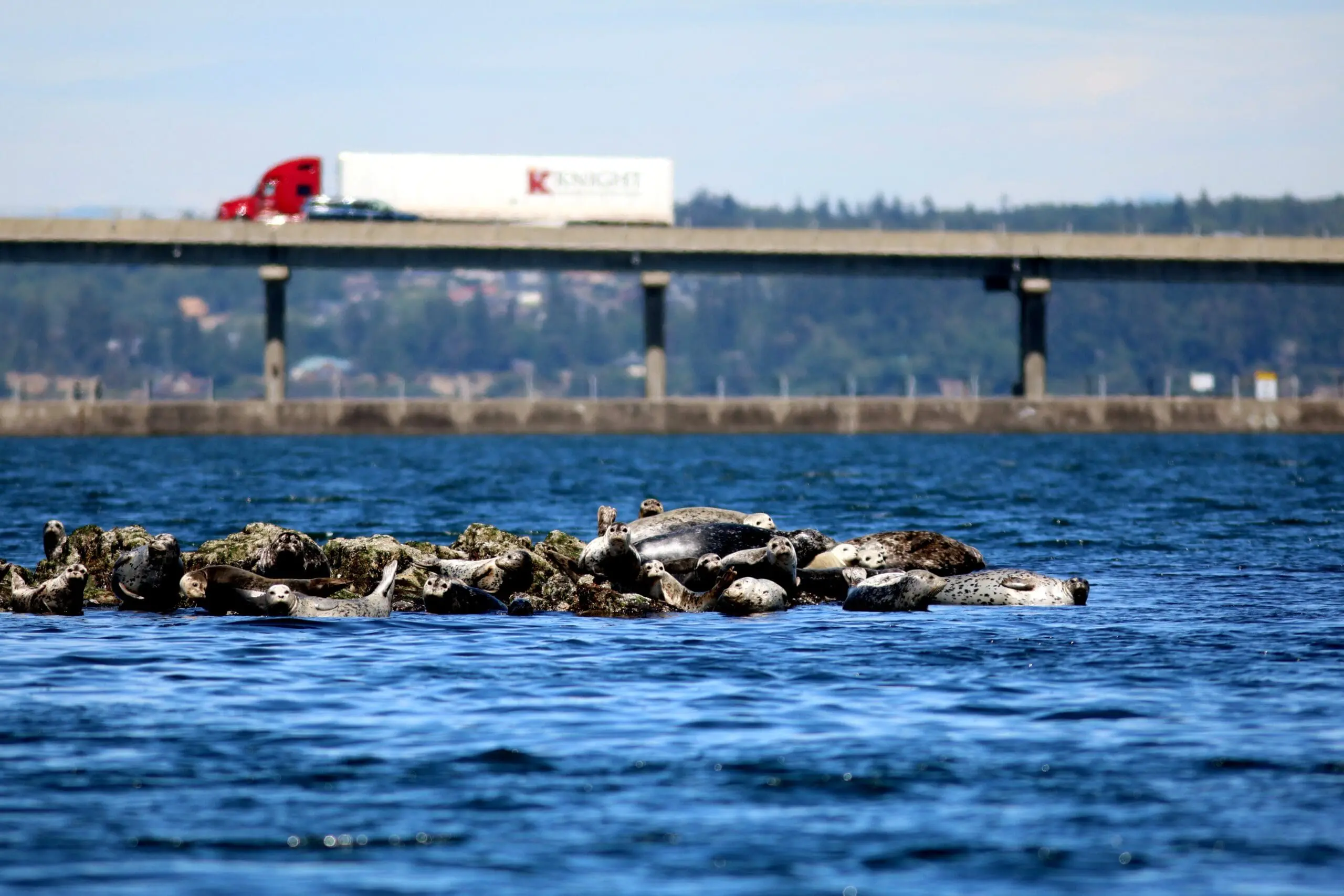
Barriers to Migration in Puget Sound
Salmon and steelhead face many obstacles on the road to recovery – sometimes quite literally. In order to better understand how physical obstacles impact the survival of salmonids, it’s important to remember that salmonids depend on intact habitat spanning thousands of miles. When human-made structures block, delay, or reduce even a relatively small part of their habitat, it can significantly impact their whole migration.
Two of the most well-known obstacles are dams and road culverts, which can both restrict access to habitat. Other human-made obstacles can also have big impacts on fish. The Hood Canal Bridge is one local example of an obstacle to salmonid migration.
Steelhead traveling through Hood Canal towards the Pacific Ocean encounter the Hood Canal Bridge which carries State Route 104 across the Canal’s northern outlet, connecting the Olympic and Kitsap Peninsulas. The bridge floats on pontoons that span 83% of the width of Hood Canal and extend 15 feet underwater. The same fish tracking data used to create Survive the Sound show that over half the juvenile steelhead that reach the bridge do not survive to reach the Pacific Ocean. The bridge is acting as a migration barrier, delaying fish as the try to find a way around it. Up to half of the juvenile steelhead that make it to the bridge won’t survive past it. This level of mortality is alarming, and observations indicate that other salmonids, including Chinook and chum salmon, are also affected by the bridge.
Compared to dams and culverts, it’s less obvious how a floating bridge could affect the survival of migrating fish. Most ask: why don’t they just swim under it? To answer this question, LLTK and our partners are conducting an assessment to pinpoint how steelhead are dying at the bridge and implement solutions to address the problem. By gathering data on noise and light levels, predator densities, and water currents and comparing those data with the tracking data seen in Survive the Sound, we are able to isolate variables contributing to mortality. Findings indicate that the bridge creates conditions and habitat that gives a substantial advantage to predators – steelhead that reach the bridge are at high risk of being eaten before they can navigate around or underneath the physical structure. Phase 1 of the assessment is complete and you can read the full report here or the illustrated summary here.
We have long understood that human-made structures can have unintended consequences on the environment. The trouble is, we keep discovering new ways this is happening. Realizing that this cycle will continue, it’s important for us to constantly research and test innovative solutions.
Luckily, many people are stepping up to the challenge of balancing human and fish habitat. The new Seattle seawall aims to improve salmon survival by mimicking the shallow mudflats that used to exist in that area. By creating an artificial sea floor, glass sidewalk panels, and habitat for plankton (salmon food), the new construction may improve juvenile salmon survival. Projects like these may help decrease the number of obstacles salmon face during their lives while still allowing humans to enjoy the same area.
Photo: Hood Canal Bridge, Hans Daubenberger – Port Gamble S’Klallam Tribe